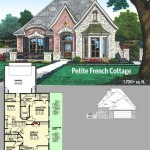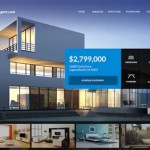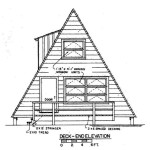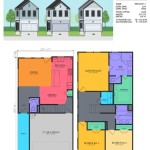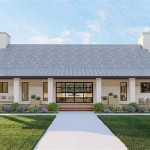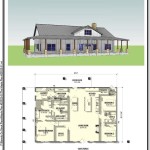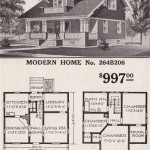3 Bedroom 1 Level House Plans: A Comprehensive Guide
The appeal of 3 bedroom 1 level house plans stems from their inherent accessibility, convenience, and adaptability. This type of house plan has gained considerable popularity due to its suitability for a wide range of homeowners, including families with young children, individuals with mobility limitations, and those simply seeking a comfortable and manageable living space that eliminates the need for stairs.
A 3 bedroom, single-story house offers a balanced combination of private and communal living areas. The three bedrooms provide ample sleeping space for families or individuals who require a home office or guest room. The single level design promotes ease of movement throughout the house, making daily tasks simpler and more efficient. This guide explores the various aspects of 3 bedroom 1 level house plans, covering factors to consider in planning, layout considerations, design styles, and benefits.
Key Point 1: Factors to Consider Before Choosing a 3 Bedroom 1 Level House Plan
Prior to selecting a specific 3 bedroom 1 level house plan, several crucial factors deserve careful assessment. These considerations will impact the overall functionality, enjoyment, and investment value of the home. Addressing these aspects early in the planning process ensures that the chosen plan aligns with long-term needs and preferences.
Lot Size and Shape: The dimensions and configuration of the building lot are paramount. A large lot provides more flexibility in terms of house size and layout. Irregularly shaped lots may require customized designs to maximize usable space while adhering to setback requirements and local building codes. A thorough site analysis, including soil conditions and topography, is essential prior to finalizing the house plan.
Budget: Establishing a realistic budget remains a critical initial step. The cost of building a house varies significantly depending on factors such as location, materials used, construction labor rates, and the complexity of the design. Obtain multiple quotes from reputable builders to understand the current market rates and avoid potential cost overruns. The budget needs to incorporate expenses beyond construction, including permits, landscaping, and interior finishes.
Lifestyle and Needs: The house plan should reflect the lifestyle and anticipated needs of the occupants. Consider factors such as the number of residents, entertaining habits, hobbies, and anticipated future changes. A family with young children may prioritize a large, open-concept living area and a dedicated playroom. Individuals who work from home may require a quiet and private home office. Anticipating these needs ensures that the house caters to the specific requirements of its inhabitants.
Local Building Codes and Restrictions: Every municipality has its own set of building codes and zoning regulations. These codes govern aspects such as setbacks, height restrictions, impervious surface limitations, and energy efficiency requirements. Consulting with local authorities or a qualified architect is essential to ensure that the chosen house plan complies with all applicable regulations. Failure to comply with these regulations can result in costly delays or modifications to the design.
Future Resale Value: While immediate needs are important, considering the potential future resale value of the house is equally crucial. Factors such as the location, design, and quality of construction influence the perceived value of the property. Choosing a timeless design and incorporating desirable features can enhance its attractiveness to potential buyers in the future. Researching comparable properties in the area can provide insights into the features that command the highest market prices.
Key Point 2: Layout Considerations for Optimal Functionality
The layout of a 3 bedroom 1 level house plan significantly impacts its functionality and livability. A well-designed layout optimizes space utilization, promotes efficient traffic flow, and creates a comfortable and inviting atmosphere. Several key principles guide the design of an effective layout.
Open-Concept Living Areas: Open-concept living areas, combining the living room, dining room, and kitchen into a single, flowing space, are a popular choice for modern house plans. This layout promotes social interaction, creates a sense of spaciousness, and allows for flexible furniture arrangements. The kitchen often serves as the focal point, with a large island providing ample counter space and a gathering spot for family and friends.
Bedroom Placement and Privacy: The placement of bedrooms is crucial for ensuring privacy and minimizing noise disruption. A common strategy is to separate the master bedroom from the secondary bedrooms, often placing it at the opposite end of the house. This arrangement provides a greater sense of privacy for the occupants of the master suite. Consider the proximity of bedrooms to potentially noisy areas, such as the living room or kitchen, and incorporate soundproofing measures if necessary.
Bathroom Placement and Accessibility: The location of bathrooms should be convenient and accessible from all areas of the house. A master bathroom attached to the master bedroom provides privacy and convenience for the occupants of the master suite. A centrally located second bathroom serves the secondary bedrooms and guests. Consider universal design principles, such as grab bars and wider doorways, to ensure accessibility for individuals with mobility limitations.
Mudroom/Entryway Functionality: A well-designed mudroom or entryway provides a transitional space between the exterior and interior of the house. This area can serve as a drop-off zone for shoes, coats, and bags, helping to keep the main living areas clean and organized. Incorporate storage solutions such as built-in benches, cubbies, and coat racks to maximize functionality. Consider the placement of the mudroom in relation to the garage or driveway for easy access.
Outdoor Living Spaces: Integrate outdoor living spaces, such as patios, decks, or porches, seamlessly into the house design. These areas extend the living space and provide opportunities for relaxation, entertaining, and enjoying the outdoors. Consider the orientation of the outdoor living spaces in relation to the sun and prevailing winds to optimize comfort. Incorporate features such as outdoor kitchens, fireplaces, or seating areas to enhance their functionality and appeal.
Key Point 3: Design Styles and Architectural Considerations
3 bedroom 1 level house plans are available in a wide range of design styles, each with its unique architectural characteristics and aesthetic appeal. The chosen design style should complement the surrounding environment, reflect the homeowner's personal preferences, and contribute to the overall curb appeal of the house.
Ranch Style: Ranch-style houses are characterized by their low-pitched roofs, horizontal orientation, and simple, functional layouts. They often feature large windows, open-concept living areas, and attached garages. Ranch houses are well-suited for single-story living and are particularly popular in suburban areas. Their simplicity and adaptability make them a versatile choice for a variety of homeowners.
Craftsman Style: Craftsman-style houses are known for their attention to detail, handcrafted elements, and natural materials. They typically feature gabled roofs, wide eaves, exposed rafters, and covered porches supported by tapered columns. Interior details often include built-in cabinetry, natural wood trim, and fireplaces. Craftsman houses exude a sense of warmth, charm, and timeless elegance.
Modern Style: Modern-style houses emphasize clean lines, geometric shapes, and minimalist design. They often feature flat roofs, large windows, and open floor plans. Modern houses prioritize functionality, efficiency, and a connection to the surrounding environment. Materials such as concrete, glass, and steel are commonly used in modern architecture.
Farmhouse Style: Farmhouse-style houses evoke a sense of rustic charm, comfort, and simplicity. They often feature gabled roofs, large porches, and wood siding. Interior details may include shiplap walls, exposed beams, and farmhouse sinks. Farmhouse houses are designed to be welcoming and family-friendly, with a focus on creating a cozy and inviting atmosphere.
Contemporary Style: Contemporary-style houses blend elements of modern and traditional design, creating a unique and evolving aesthetic. They often feature a mix of materials, asymmetrical layouts, and large windows. Contemporary houses prioritize innovation, flexibility, and energy efficiency. They are designed to adapt to the changing needs of modern lifestyles.
Choosing the right design style for a 3 bedroom 1 level house plan requires careful consideration of personal preferences, the surrounding environment, and the overall functionality of the house. Each style offers unique advantages and characteristics that can enhance the livability and aesthetic appeal of the home.
In addition to these considerations, sustainable design principles are becoming increasingly important in the construction of new homes. Incorporating energy-efficient windows, insulation, and appliances can reduce energy consumption and lower utility bills. Utilizing sustainable building materials, such as recycled content products and locally sourced lumber, can minimize the environmental impact of the construction process. Implementing water-conservation measures, such as low-flow fixtures and rainwater harvesting systems, can conserve water resources. By embracing sustainable design principles, homeowners can create environmentally responsible and energy-efficient homes.

Single Y 3 Bedroom House Plan Pinoy Eplans

Pin Page

Small House Plans Plan 3 Bedrms 1 Baths 900 Sq Ft 211 1015

3 Bedroom House Plans

3 Bedroom One Story Open Concept Home Plan Architectural Designs 1796 Sq Ft 790029glv House Plans

One Level House Plans For A Contemporary 3 Bedroom Home

Single Story House Plans For Contemporary 3 Bedroom Home

Affordable Small 1 Story Traditional House Plan With 3 Bedrooms Springhill

Sam 3 Bedroom Bungalow Style House Plan 7825

Plan 39190st One Level 3 Bedroom Home

